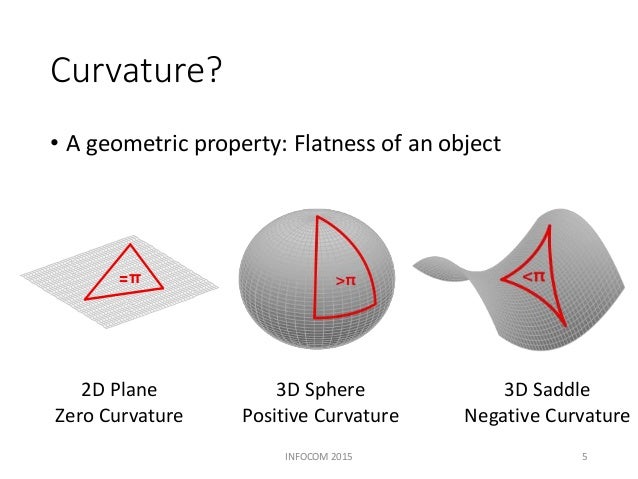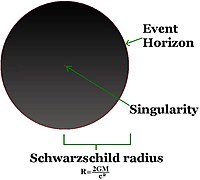lots of theory still attached to what is accepted as fact.Wasn't the singularity a construct based on our math (Divide by zero)? One also could assume that a singularity is impossible based on the basic constants (Planck) in the universe and our quantum mechanics.
It has been suggested that a singularity, which contains matter compressed to an infinite density, could become a Big Bang, creating an entire new universe within the black hole
If that is so, then the new universe might have slightly different physical properties from the one that made the black hole in the first place.
Liken that to the random mutation that allows a coronavirus to become a different strain.
Indeed. However, I was implying that there is no such thing as "infinite density", but that the matter would compress in on itself when achieving specific points in mass up to a point where the mass would reach a critical state where a massive explosion would be triggered instead.
😱 Hey, it just came to me...existence is a diesel engine! They say you're sharpest in the morning.
Eat your heart out Einstein!
Eat your heart out Einstein!
It was just short of 2am here when I signed off.Do you always stay up til 4am? Insomnia?
Late to bed and late to rise! 😴
With a BH it’s almost as if space time can’t ‘support’ the density, so it ‘falls through’ into another dimension or universe.
You can sort of imagine a bubbl3 emerging on the other side and expanding out into a new cosmos, perhaps with slightly different characteristics.
You can sort of imagine a bubbl3 emerging on the other side and expanding out into a new cosmos, perhaps with slightly different characteristics.
I thought we did Black Holes to death earlier... but evidently they still lure us "siren-like" onto the rocks. 😀
Surely the only issue with them is the two (accelerating) relativistic observer reference frames we use, which happen to involve that troublesome infinity. And extreme tidal forces, which is not something we usually worry about too much. But as a sea-faring Pompey lad, I am OK on tides.
Einstein Field Equations - for beginners! - YouTube
Taking a break at 53:12 in the Einstein Field Equations for Beginners. Getting a bit heavy, but we have got the metric tensor (which distorts triangles, AFAIK) out of the way. Onto the Ricci tensor. Can't wait! 😎
Surely the only issue with them is the two (accelerating) relativistic observer reference frames we use, which happen to involve that troublesome infinity. And extreme tidal forces, which is not something we usually worry about too much. But as a sea-faring Pompey lad, I am OK on tides.
Einstein Field Equations - for beginners! - YouTube
Taking a break at 53:12 in the Einstein Field Equations for Beginners. Getting a bit heavy, but we have got the metric tensor (which distorts triangles, AFAIK) out of the way. Onto the Ricci tensor. Can't wait! 😎
Last edited:
Come on Steve! We mere mortals need an explanation of what a metric tensor is!Getting a bit heavy, but we have got the metric tensor (which distorts triangles, AFAIK) out of the way.

On a Flat Space, the Pythagoras Theorum (you know, the square on the hypoteneuse equals the sum of the squares on the other two sides) holds true. You can draw a right angled triangle on a flat piece of paper to prove it.
However, things get interesting when we try to draw right angled triangles on a Curved Space such as a Sphere. Then we can even draw triangles where all three angles are right angles and the Pythagoras Theorum no longer holds true!

And that's where the Metric Tensor comes in!
The Metric Tensor can be thought of as the device which makes corrections to the Pythagoras Theorem when the Right Angled Triangle is on a Curved Space instead of a Flat Space!
The Ricci Tensor is the mathematical device that controls the growth rate of the volume of space bounded by a sphere and is a contraction of the Riemann Curvature Tensor.Onto the Ricci tensor. Can't wait! 😎

I'll not even attempt to explain the significance of the Ricci Tensor!

What's all this Curvature stuff got to do with General Relativity? 
At school we were taught Euclidean Geometry. That's the geometry in which the three angles of a triangle add to 180 degrees.
However, the geometry of spacetime is non-Euclidean. For example, if a triangle is constructed out of three rays of light, then the angles do not necessarily add up to 180 degrees because of the effect of gravity.
This led Einstein, in his theory of General Relativity, to introduce the idea of spacetime Curvature.
Einstein's idea that spacetime is curved was later verified by the observation of the slight bending of starlight by the Sun during a solar eclipse in 1919.

At school we were taught Euclidean Geometry. That's the geometry in which the three angles of a triangle add to 180 degrees.
However, the geometry of spacetime is non-Euclidean. For example, if a triangle is constructed out of three rays of light, then the angles do not necessarily add up to 180 degrees because of the effect of gravity.
This led Einstein, in his theory of General Relativity, to introduce the idea of spacetime Curvature.
Einstein's idea that spacetime is curved was later verified by the observation of the slight bending of starlight by the Sun during a solar eclipse in 1919.
So... How much can you bend light?
Edit:
I was thinking about when using gravity.
Edit:
I was thinking about when using gravity.
Last edited:
I can't bend light - I'm not THAT massive! 😀So... How much xan you bend lighr?
The light rays from a distant star skimming the Sun's surface would probably be only be deflected through an angle of a fraction of a thousandth of a degree.
I'd need to research it further for a more definitive answer.
I'd need to research it further for a more definitive answer.
For light grazing the surface of the sun, the approximate angular deflection is roughly 1.75 arcseconds (approximately 0.0005 degrees).
Eddington experiment - Wikipedia
The more massive the object, the more the light will bend, of course.
Gravitational lens - Wikipedia
Eddington experiment - Wikipedia
The more massive the object, the more the light will bend, of course.
Gravitational lens - Wikipedia
Last edited:
If we can see its event horizon is it as physically large as a typical galaxy, or a tiny point that's as massive as a typical galaxy?
Daniel Fleisch gives a very succinct introduction to what tensors are here (12 minutes)
What's a Tensor? - YouTube
I have his 'Introduction to Maxwell's Equations' and 'Introduction to Schrodinger's Equation' student books - fantastic if you want to get up to speed as a budding armchair amateur physicist like me!
🙂
What's a Tensor? - YouTube
I have his 'Introduction to Maxwell's Equations' and 'Introduction to Schrodinger's Equation' student books - fantastic if you want to get up to speed as a budding armchair amateur physicist like me!
🙂
I gave a similar link and referred to SLABs in post #4666.
'Stupendously large' black holes could grow to truly monstrous sizes | Space
Mind boggling!
Last edited:
When we talk about the size of a black hole, we mean the radius of the event horizon, or Schwarzschild radius.If we can see its event horizon is it as physically large as a typical galaxy, or a tiny point that's as massive as a typical galaxy?
It is the Schwarzchild radius that might possibly (its only sensationalist conjecture) be as large as a galaxy, but it is a geometrical largeness, not a physical largeness.

All of the mass of a SLAB is concentrated at the singularity which has no physical dimensions whatsoever.

Last edited:
P.S. There's currently no evidence that stupendously large black holes (SLABS) are real.
And they "could be as large as a entire galaxy" is simply sensationalism!
My link looks at the idea sensibly. 'Stupendously large' black holes could grow to truly monstrous sizes | Space
And they "could be as large as a entire galaxy" is simply sensationalism!
My link looks at the idea sensibly. 'Stupendously large' black holes could grow to truly monstrous sizes | Space
Last edited:
Seems SLABS or near-SLAB’s must be of primordial origin since there’s not enough matter in close proximity to form objects that large in today’s universe.
(The article mentions WIMP’s - I thought these had been discounted as a serious possible explanation for dark matter?)
(The article mentions WIMP’s - I thought these had been discounted as a serious possible explanation for dark matter?)
Last edited:
- Status
- Not open for further replies.
- Home
- Member Areas
- The Lounge
- What is the Universe expanding into..